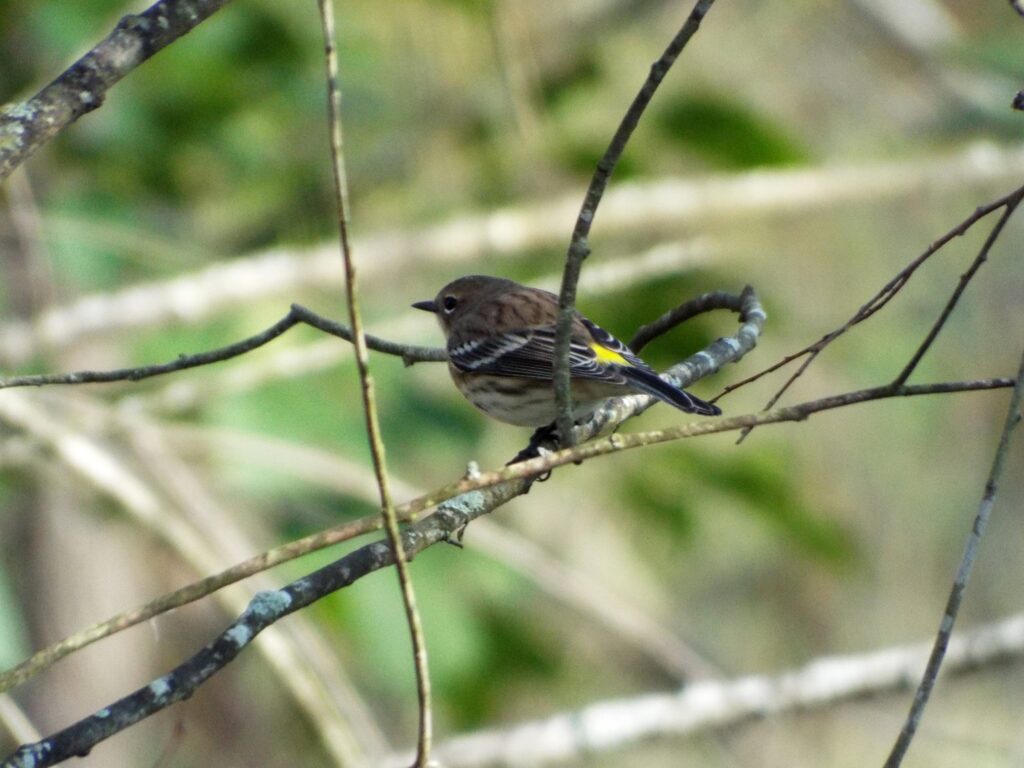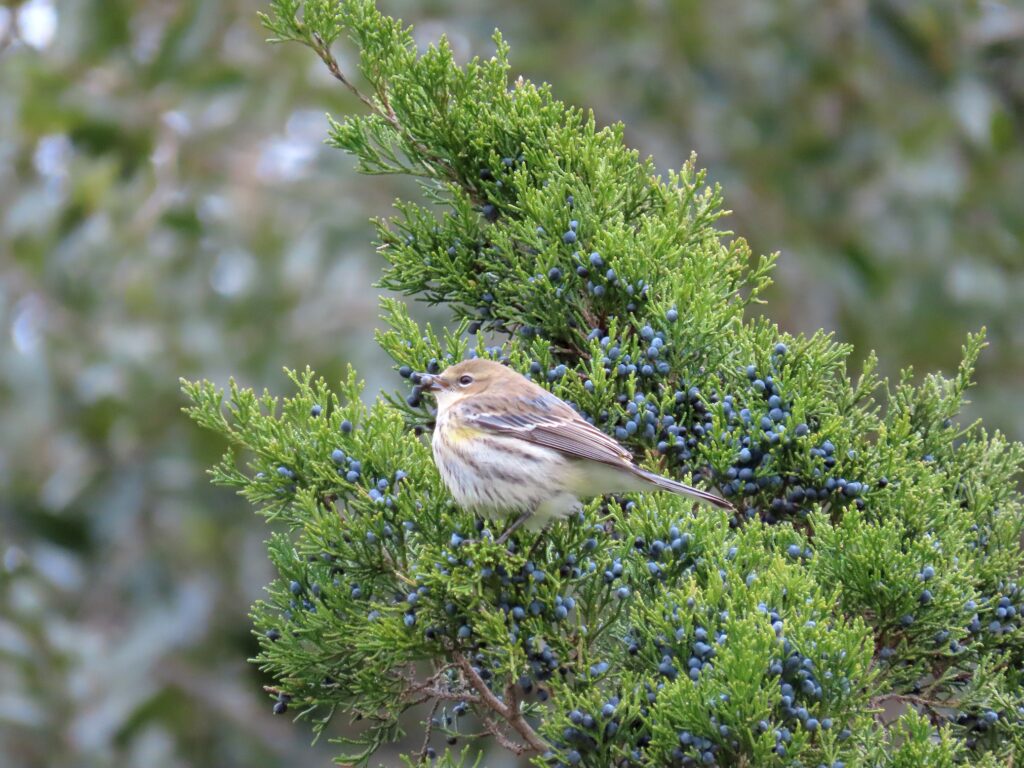






This week for Flora and Fauna Friday we’re examining our most widespread winter warbler: they Myrtle Warbler (Setophaga coronata coronata). A bird affectionately referred to as the “Butter-butt” by bird watchers.
The Myrtle Warbler is the subspecies of the Yellow-rumped Warbler found here in the eastern US. They were originally classified as a separate species from the more western Audobon’s Warbler, then both were lumped together as the Yellow-rumped Warbler, and now there’s evidence to suggest they may be split again in the future. But that’s a different story for a different time from a different person. Myrtle Warblers are a member of the Wood Warbler family, Parulidae. Wood Warblers are a diverse group of small, insect-eating birds native to the New Word. They are notoriously difficult for beginning bird watchers to identify in the field due to their similar songs and plumages, highly variable appearance, and their tendency to move quickly through brush and treetops without giving you the chance for a clear viewing.
Myrtle Warblers are probably the easiest to identify warbler in our area. They are easily recognized by their distinctly butter-yellow rump, as well as their yellow flanks and crowns, white throat, and streaked breast with a white part down the center. Females (pictured below) and immature males are usually brown above with a dusky streaking to the breast. Adult males are more boldly patterned with steel-blue, white, and black with a split black breast and a black mask. They are also easily identified by their voice. Their call is a rather mundane, sharp “chek” that, once you’ve heard it a few thousand times (which can be fulfilled by these prolific birds in just a few winter outings), is hard to misplace.
Myrtle Warblers are migratory. They leave our state in spring for Canada, where they breed over the summer. In fall they migrate back to our state en masse, quickly becoming our most numerous woodland bird throughout the winter. You can sometimes see hundreds on a morning walk if you’re in the right place. They are unique among our warblers in that not only does the winter migration for many end in the southeastern US but their winter diet consists primarily of fruit. They get their common name from their wintery food source: the Southern Wax-myrtle (Morella cerifera). Wax-myrtles, as their common name suggests, produce wax. They produce this wax on the outside of their leaves and fruits to help conserve water. Myrtle Warblers eat these fruits to digest the wax. Wax is a type of fat, which is high in calories but typically hard to digest. Myrtle Warblers are able to exploit this rich food source with unique biological adaptations. The Wax-myrtle benefits from this relationship by having its seeds spread far and wide by this active little warbler. Myrtle Warblers can also be seen scraping wax off of the seeds of other plants, such as Poison Ivy and the invasive Chinese Tallow Tree, or visiting suet feeders for a fatty treat.